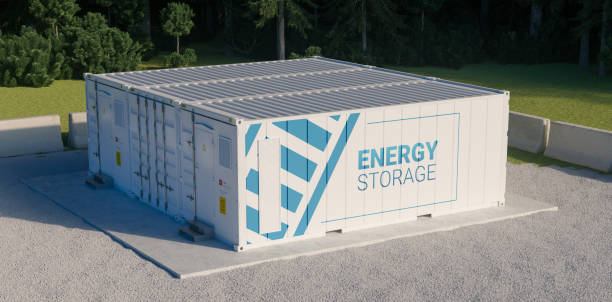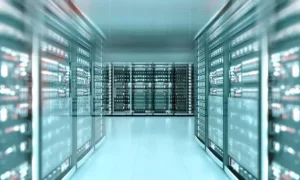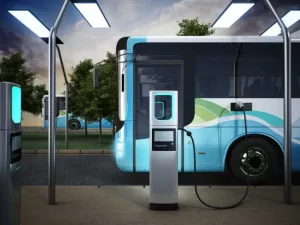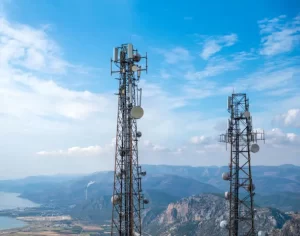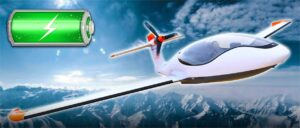From the perspective of the entire power system, energy storage application scenarios can be divided into three major scenarios: power generation side energy storage, transmission and distribution side energy storage, and user side energy storage. As energy storage technology becomes more mature, costs gradually decrease, and electricity price incentive policies continue to be introduced, the application fields of energy storage become more abundant and can be divided into the following ten types.
Zero-carbon smart park + energy storage
There are many equipments in traditional industrial parks, which have the characteristics of large power consumption, high load for a long time, and high energy consumption of equipment. In order to achieve carbon reduction goals, renewable energy is widely used in smart parks. However, due to its instability, it will lead to insufficient or excess power supply.
In this case, energy storage systems are needed to adjust the supply and demand levels. In the “smart park + energy storage” mode, the energy storage system can collect excess power from solar energy, wind energy, etc., and then supply it to the grid during the main power consumption time. This not only stabilizes the power grid, but the energy storage system can provide backup power to the grid in emergencies to ensure the normal operation of the park.
Commercial complex + energy storage
The integrated implementation plan for energy saving, energy storage and charging in commercial complexes is a comprehensive solution, including energy saving, energy storage and charging. Reduce the energy consumption of commercial complexes by adopting energy-saving technologies and equipment; install distributed new energy power stations in commercial complexes and store electric energy through energy storage equipment for commercial use, thereby reducing reliance on traditional energy.
In addition, through energy storage equipment, charging piles can also be set up in commercial parking lots, underground garages and other places to provide charging services for new energy vehicles.
Data center + energy storage
Low-carbon data centers will be the future development trend. “Renewable energy + storage integration + virtual power plant” is one of the ways that data centers can achieve carbon neutrality. Through digital and intelligent technologies, distributed energy, energy storage, and loads are deeply integrated. By establishing the aggregation effect of the upper-layer platform of the virtual power plant, the data center load, renewable energy power supply, and energy storage become an organic whole, achieving the goal of autonomous operation in the region.
Self-use and self-managed energy autonomous domain truly realizes a carbon-neutral data center. In this process, the energy storage system improves the economics of power operation of the data center and enhances the power supply reliability of the data center through mechanisms such as peak shaving and valley filling, capacity allocation, etc. It can effectively prevent accidental outages of the data center while being low-carbon and energy-saving. Electricity causes data loss and improves the security and stability of the power supply system.
Integration of optical storage and charging
With the rapid development of the new energy vehicle industry, charging demand is also growing simultaneously. As a new attempt in the green economy,”integrated charging stations with light, storage and charging” have broad development prospects. The photovoltaic storage charging station integrates photovoltaic power generation, large-capacity energy storage batteries, smart charging piles and other technologies.
It uses the battery energy storage system to absorb low valley power and support fast charging loads during peak periods to provide green power for electric vehicles. Supplemented by photovoltaic power generation systems, it can realize auxiliary service functions such as power peak shaving and valley filling, effectively reduce the load peak and valley difference of fast charging stations, and effectively improve system operation efficiency.
5G base station + energy storage
In order to meet the growing number and power demand of 5G base stations, and to reduce resource waste, the electrochemical energy storage system has become a suitable choice for backup power supply of 5G base stations due to its flexible, intelligent and efficient technical features.
5G base station distribution and storage utilizes intelligent peak shifting, charging during idle hours and discharging during busy hours, which effectively solves the pain point of 5G base station construction being unable to proceed smoothly due to power supply problems, and helps to vigorously promote the implementation of 5G base stations and the development of 6G technology.
Household use + energy storage
More and more households are beginning to install photovoltaic power stations as a supplement to their energy consumption or as a source of electricity bill income. Configuring energy storage power stations has become an important measure to ensure the safety and stability of household electricity consumption. Household energy storage usually includes equipment such as batteries, supercapacitors and hot water storage tanks, which can effectively store clean energy such as solar energy and wind energy produced by the household.
The advantage of this is that it allows households to be self-sufficient when needed, and at the same time, excess electricity can be sold to the grid to obtain certain economic benefits. Household energy storage can help households become self-sufficient and no longer rely on the grid, thus reducing household electricity costs. In addition to being self-sufficient, household energy storage can also sell excess electricity to the grid to obtain certain economic benefits. When power quality is poor, power quality can also be improved by storing electrical energy and providing power support.
Microgrid + energy storage
It is essential to develop island construction. These islands are home to a small number of residents, island-guarding militiamen, and also have mobile signal transmitting base stations, maritime radar stations and other electrical equipment. In the harsh natural environment, conventional photovoltaic power generation or wind power generation cannot provide stable and reliable power to the island in this scenario.
Install an off-grid smart island microgrid on such an island, use the energy management system to accurately coordinate and control power generation, energy storage, and power consumption conditions, and flexibly allocate the connection methods of each user to achieve “source-grid-load-storage” coordination. control and economical operation. The off-grid smart island microgrid not only solves the energy consumption problem of island residents, but also provides power supply guarantee for island and ocean development and protection. It also provides a technical model for the construction of smart island microgrid.
Mining area + energy storage
In areas such as oil exploration and coal mines, there is no economical power supply that is reliable, fixed, and can continuously supply power. After the energy storage system is configured, when a fault occurs on the grid side or power supply needs to be stopped for normal maintenance, the battery system on the load side converts the DC in the battery system into AC through the energy storage converter to provide power to the user side.
During normal operation, the time period during which the user side draws power from the grid side and the time period during which the battery pack stores energy are reasonably allocated by the system controller based on the peak, flat, and valley periods of electricity billing. Offshore oilfield power grid is a typical island power grid with small power supply capacity and large load capacity. The moment of large load start-up and grid failure will cause large frequency fluctuations. Configuring energy storage can effectively improve the frequency regulation performance of the power system and maintain frequency stability.
Emergency energy storage power supply
High-power emergency energy storage power supply is a subdivision of the new energy battery industry. It can be simply understood as an “oversized power bank”. Portable energy storage power supply can be used in outdoor scenes such as RV travel, night fishing, and outdoor camping. In addition, when the power grid power supply system fails, the emergency energy storage system can provide power guarantee for emergency rescue and can be used in various scenarios such as emergency rescue and hospital backup power supply.
Urban rail transit + energy storage
The urban rail transit energy storage system refers to the process in which the regenerative braking of urban rail transit vehicles generates a large amount of regenerated electric energy, and the introduction of an energy storage system to recover the regenerated electric energy and recycle it is the requirement and development direction for building an energy-saving society in the future.
To learn more about the energy storage industry, stay tuned for updates on the website, or follow our social media accounts.

